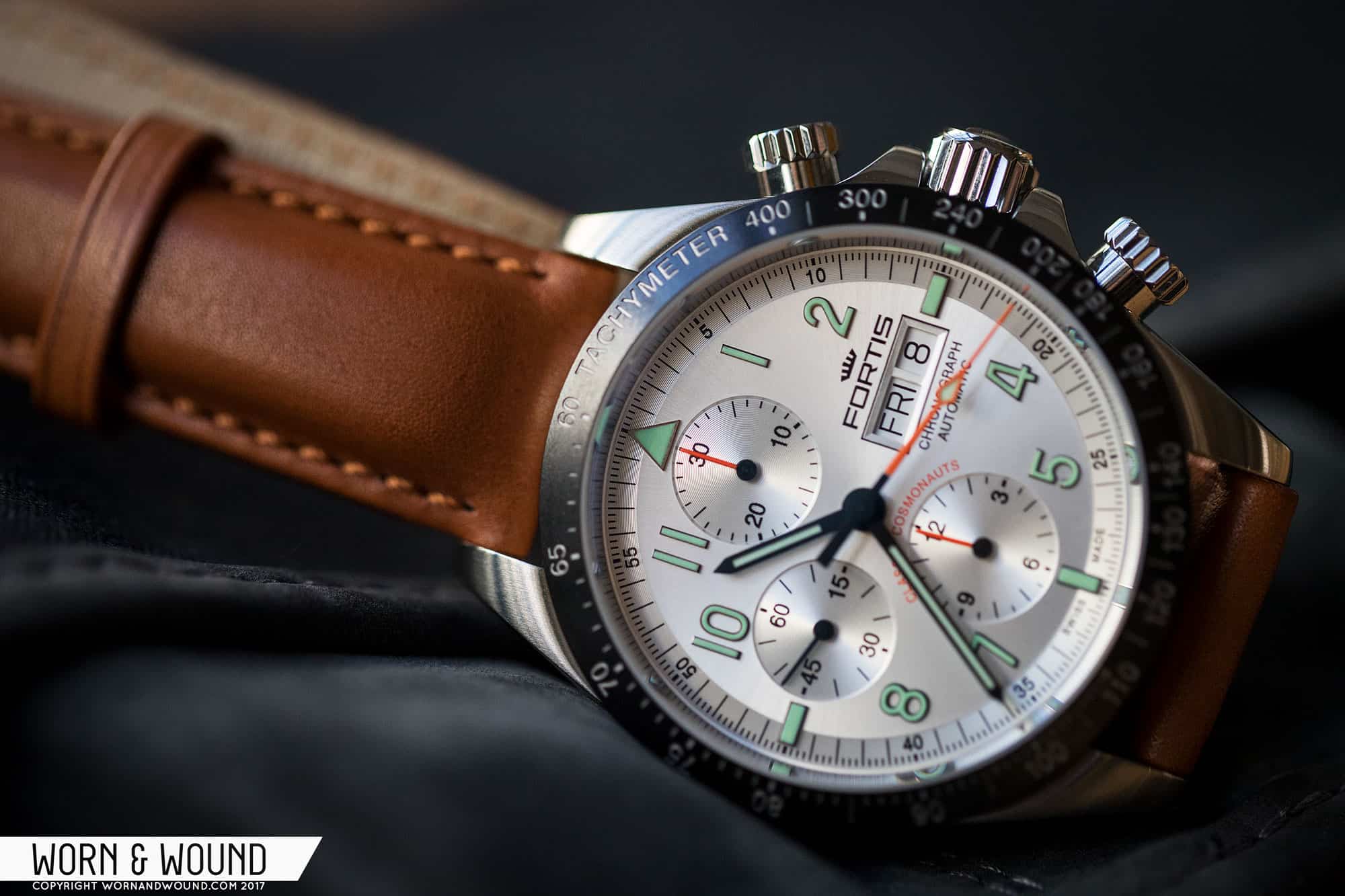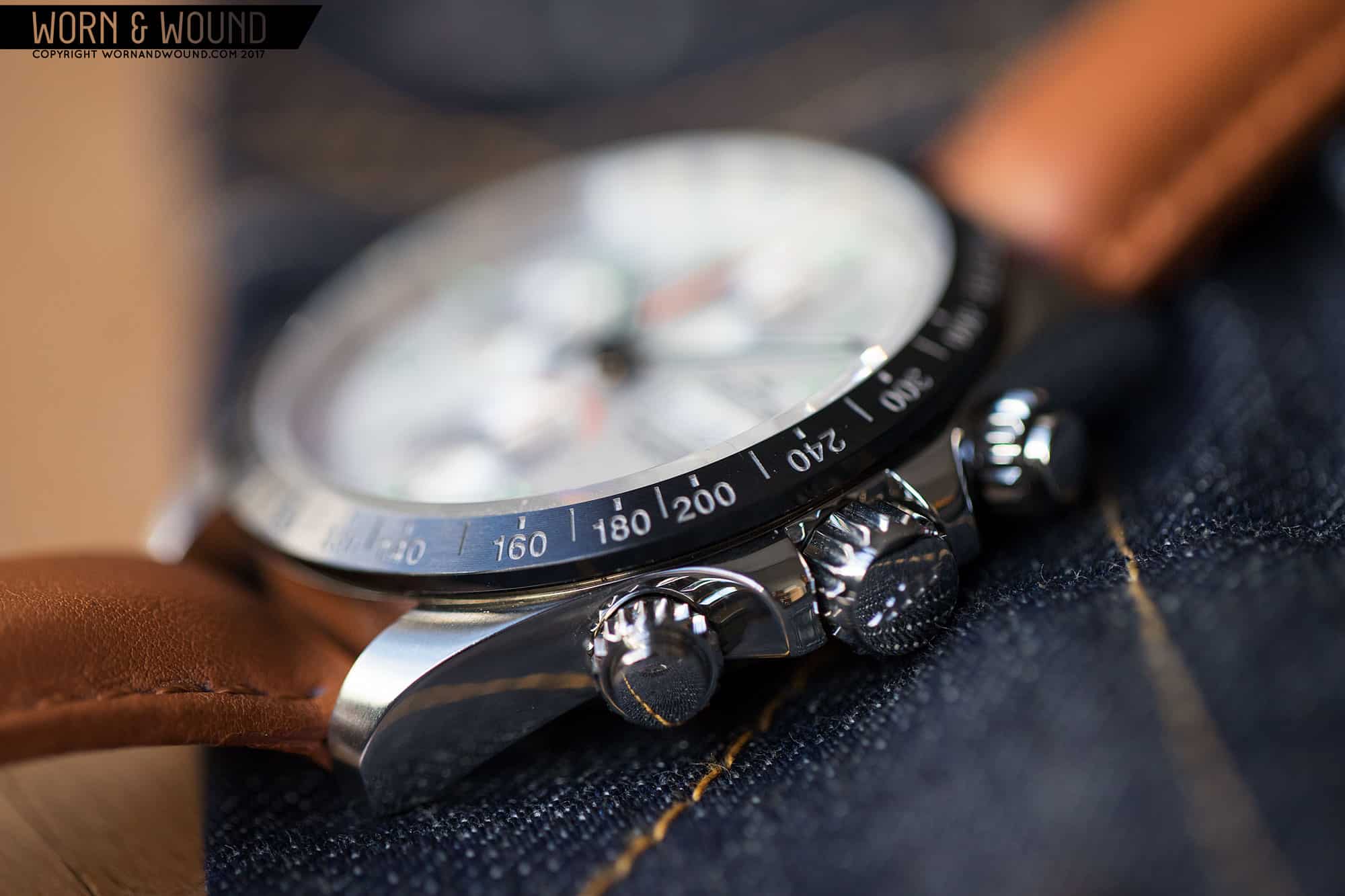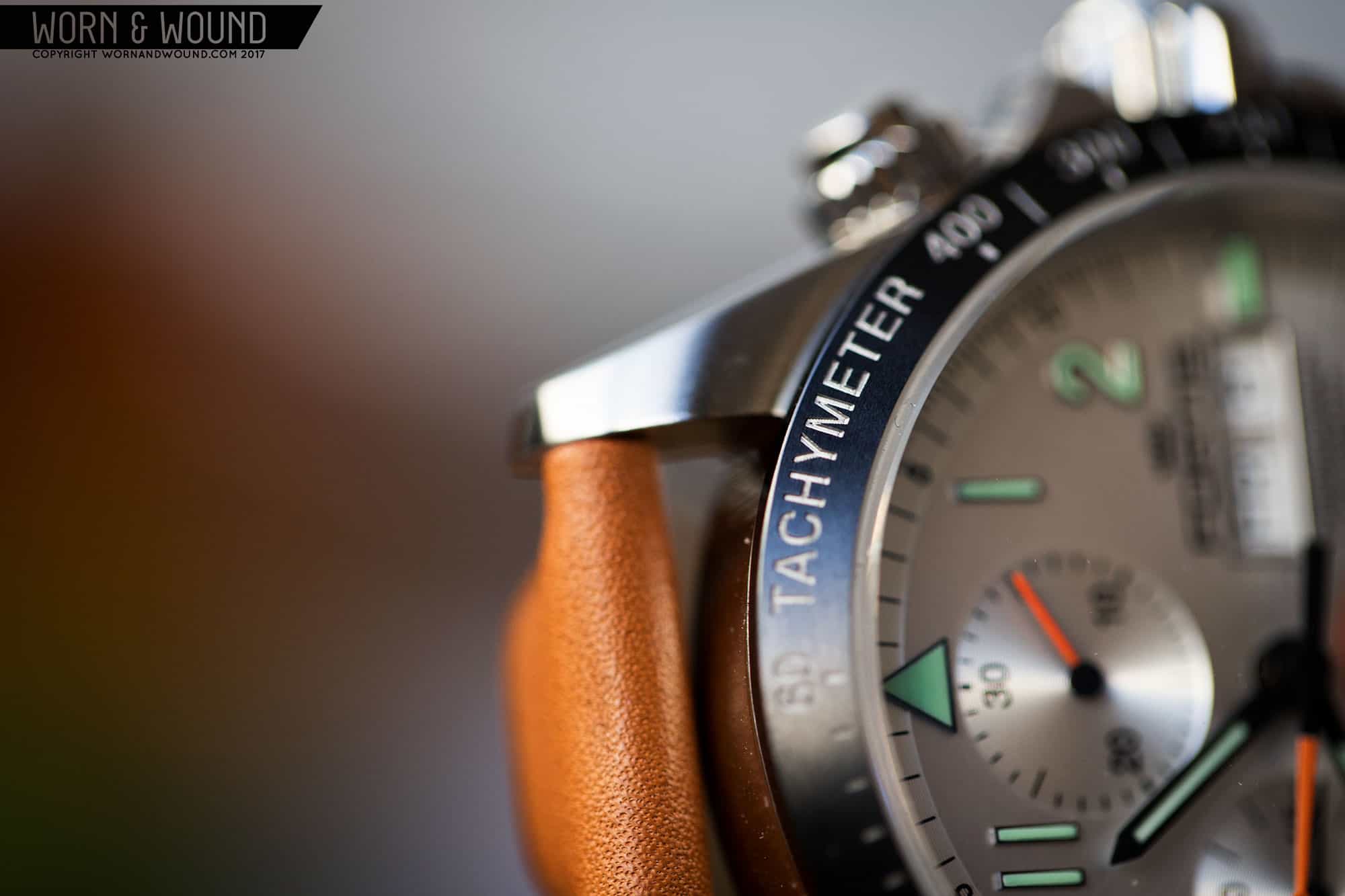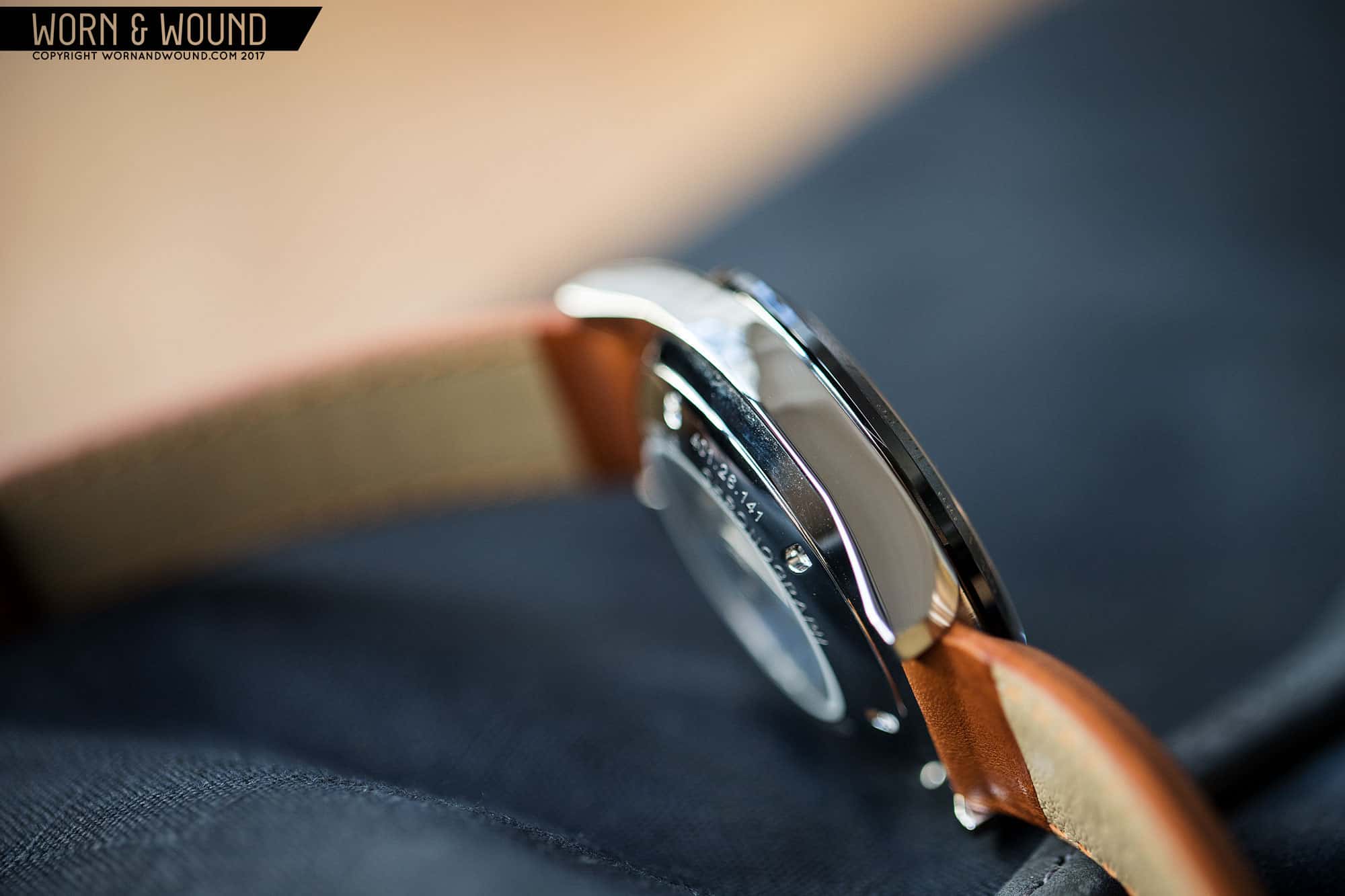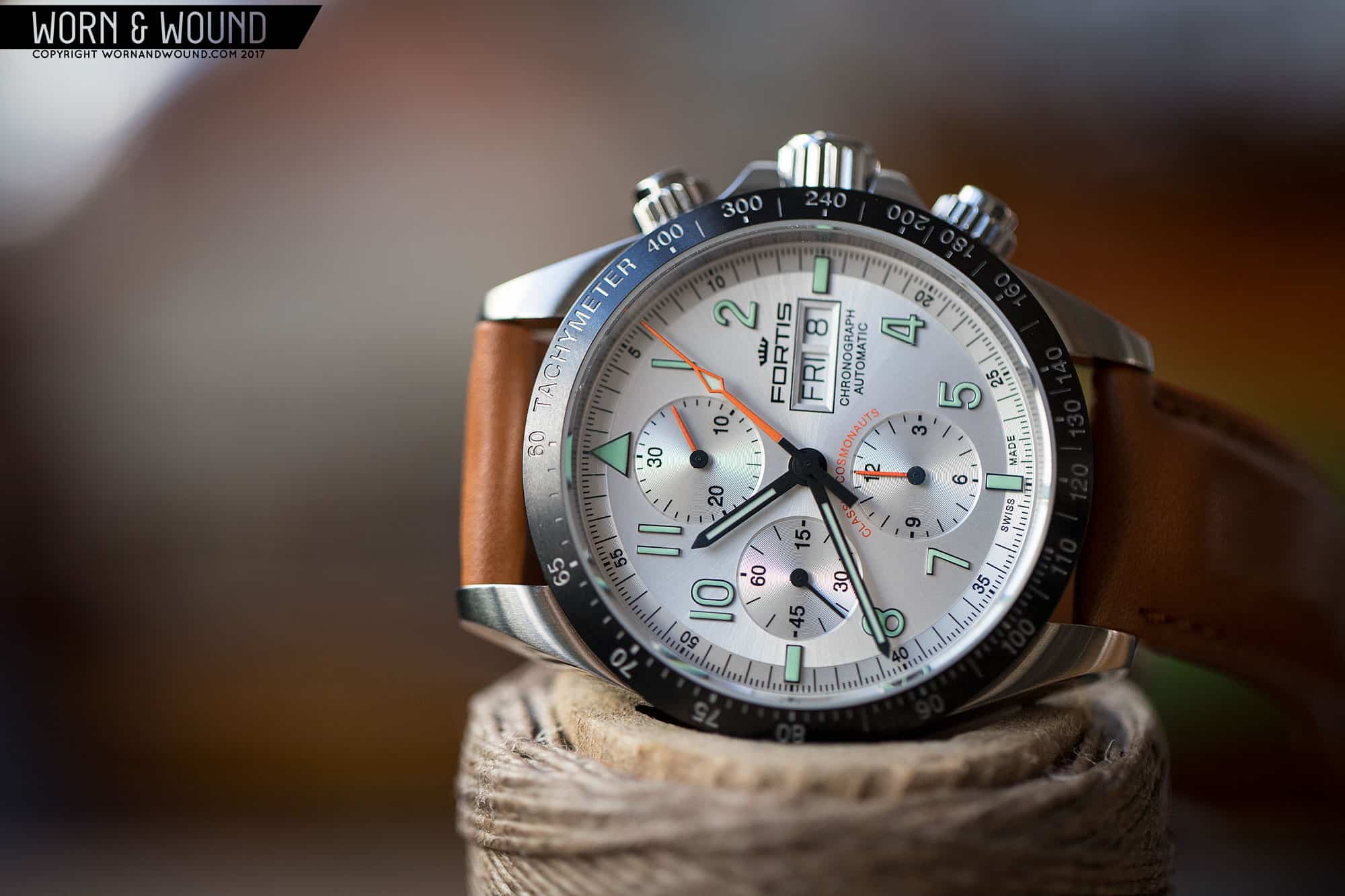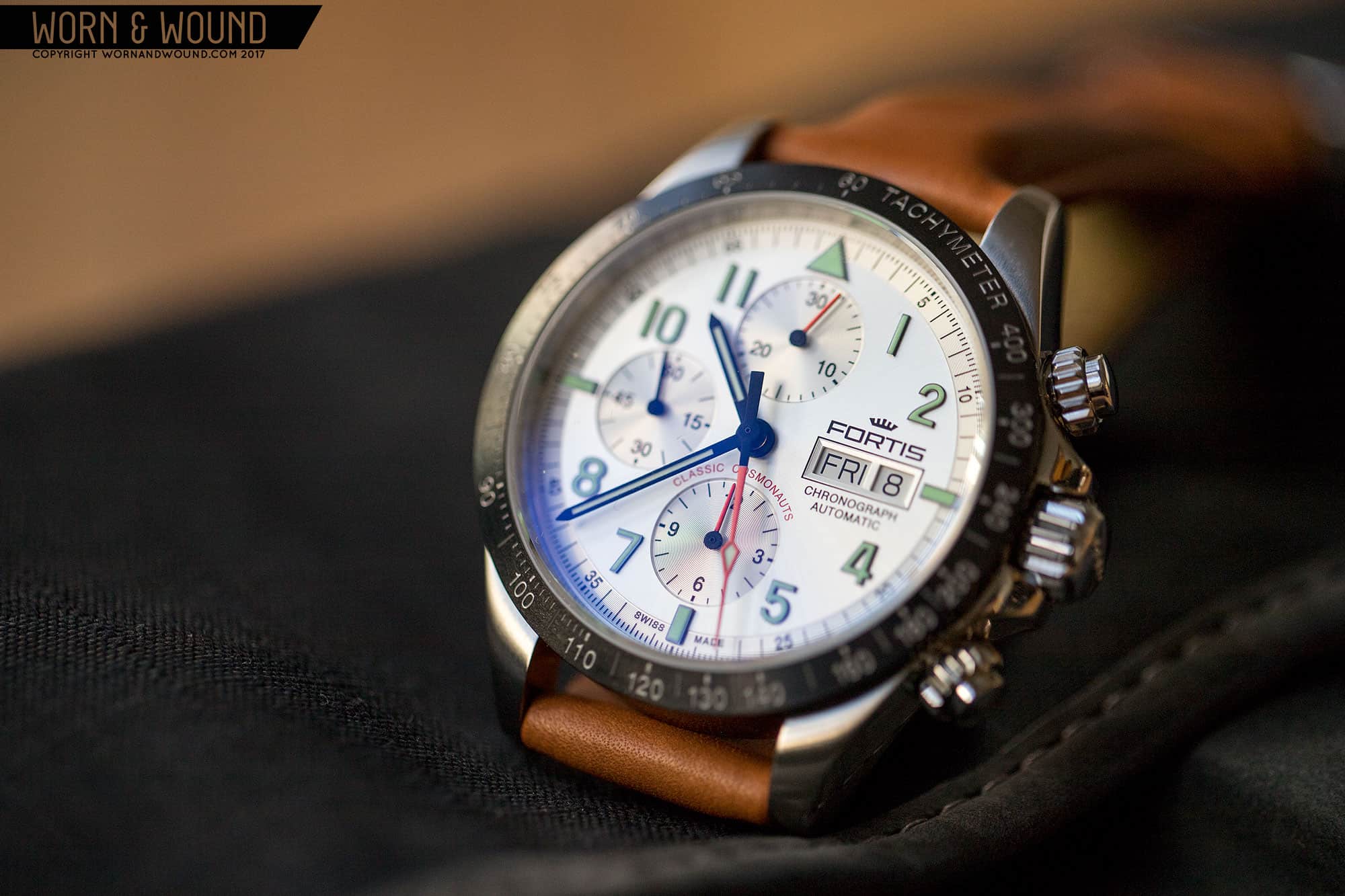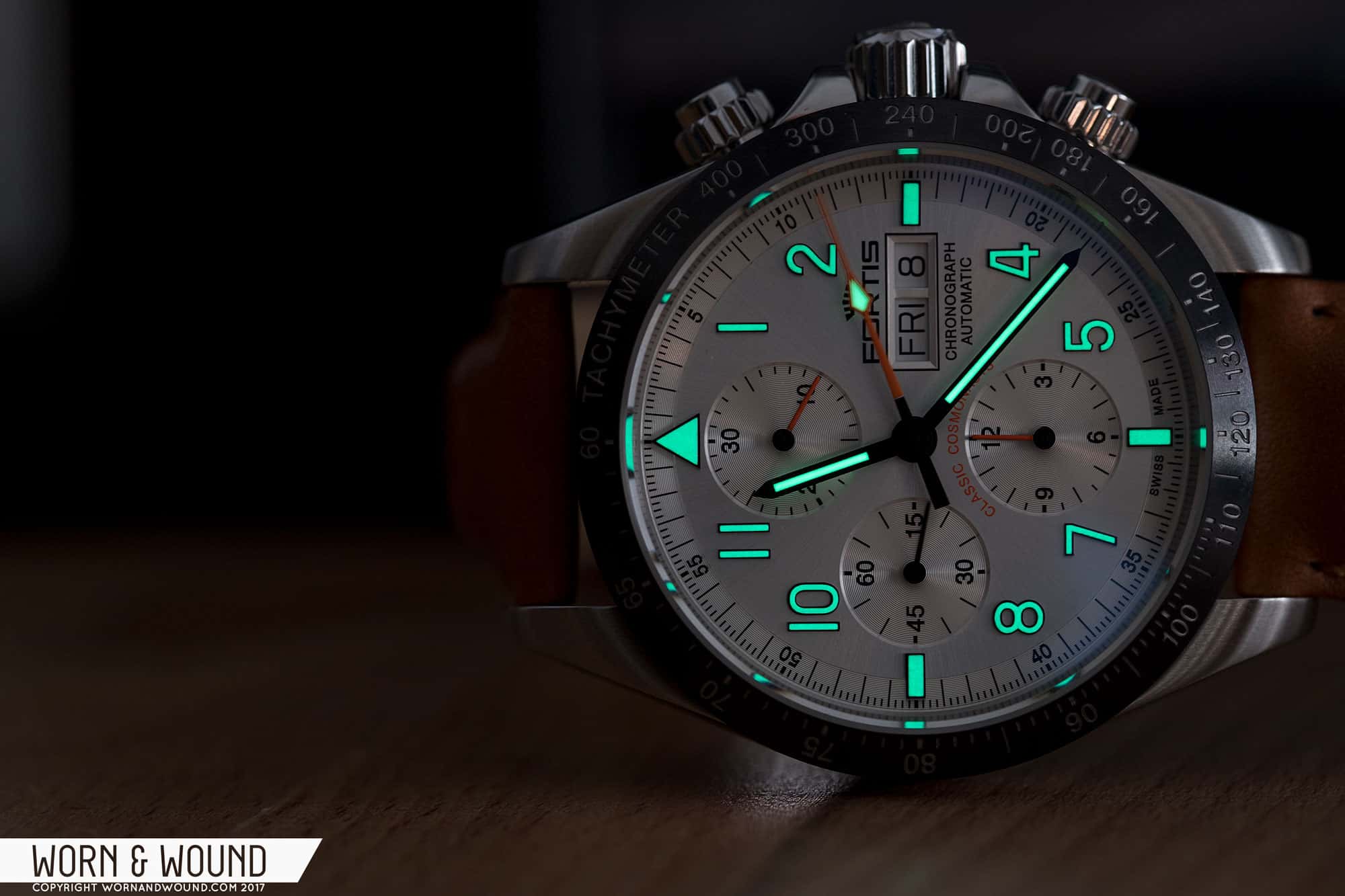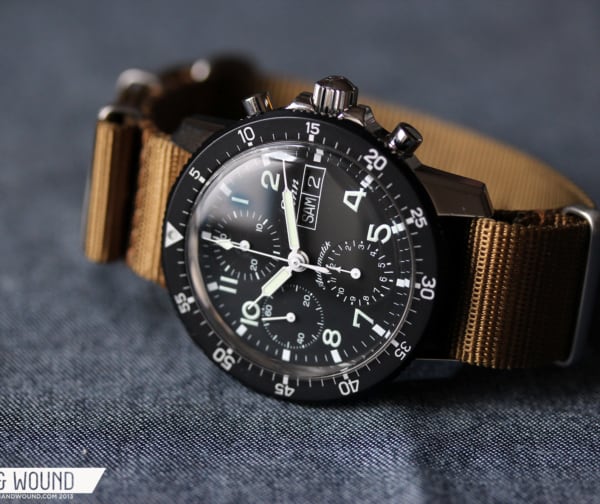The Fortis Cosmonautis Classic Chronographs were one of the highlights of Baselworld 2016. An update to as iconic a watch as the brand makes, the Cosmonautis Classic Chronographs were clean, bold and refreshing. Available in four styles mixing black and silver dials with steel and ceramic bezels, not to mention leather and bracelet options, there seemed to be a version that would suit most chronograph fans. The only downside was that they were a bit pricey, starting at just over 3,000 CHF. Well, that all changed last year when WatchBuys, their exclusive US retailer, implemented “direct pricing” and brought them down significantly, starting at $1,680. This made them not just a great looking watch, but also a solid value.
 Before getting into the new watches it’s worth brushing up on the history of this watch. While Fortis might not be the first brand to jump to mind when thinking of watches that have been to space, they have spent as much if not more time among the stars than others. Starting in 1994, Fortis have been part of the standard equipment for cosmonauts, racking in over 100,000 orbits over the years. The first Cosmonautis watch, which is a collectible today, was an awesome Lemania 5100 powered 40mm chronograph. That watch served as the inspiration for the one we have here today.
Before getting into the new watches it’s worth brushing up on the history of this watch. While Fortis might not be the first brand to jump to mind when thinking of watches that have been to space, they have spent as much if not more time among the stars than others. Starting in 1994, Fortis have been part of the standard equipment for cosmonauts, racking in over 100,000 orbits over the years. The first Cosmonautis watch, which is a collectible today, was an awesome Lemania 5100 powered 40mm chronograph. That watch served as the inspiration for the one we have here today.
For this review, we’ll be taking a look at the Fortis Cosmonautis Classic AM Ceramic model on the leather strap. This version comes in at $1,790 with some of the additional cost coming from the bezel. AM refers to the silver dial. For the most “traditional” version, you’d want to go for the steel bezel PM model.









 Featured Videos
Featured Videos




